NYC’s Forgotten ‘War on Christmas Trees’
Discover how an obscure holiday crackdown affects festive street vendors today!


Coexisting alongside the 8.5 million people in New York City are the animals that have made the Concrete Jungle their home. This most obviously includes pigeons, squirrels, and rats, but a plethora of other animals stalk the streets of the city. Some of New York City’s famous animals have become so well-known that they eventually turn into symbols of New York themselves.
In a previous post, we took a look at some of New York City’s most well-known feline residents, who live in bodegas, hotels, and bookstores. Now, we’re covering NYC’s famous animals throughout history. (This, by no means, is an exhaustive list, so let us know your favorite New York-based critters, creatures, and pets in the comments).
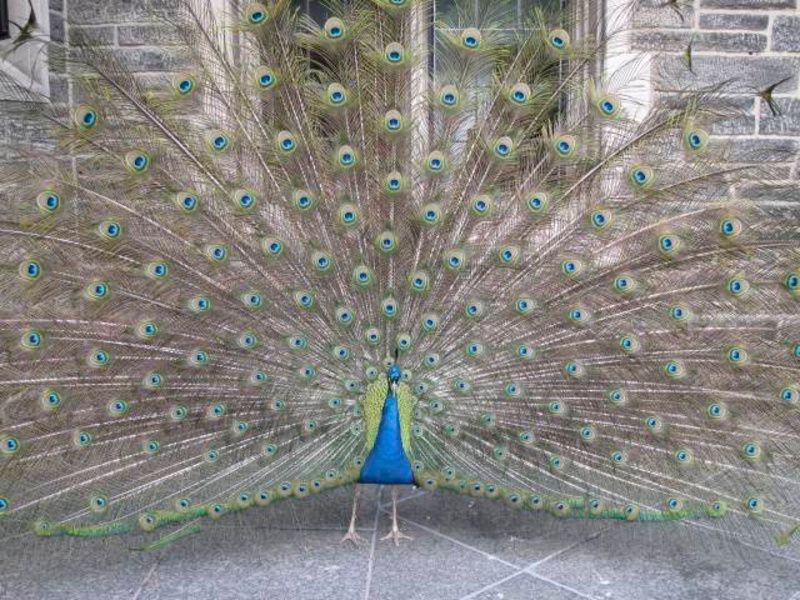
Peacocks have been a presence at the Cathedral of St. John the Divine since the 1980s when the birds were donated by the Bronx Zoo. Jim and Harry, the blue males, arrived in 2002, and Phil, the white-feathered one, came later. These colorful birds are named after clergymen at the Cathedral. One even has had his own Twitter account: @CathedralPhil, though the account went silent in 2019. On January 21st, 2023, the three peacocks retired to Animal Nation, an animal sanctuary in upstate New York where they can be properly cared for as they age.
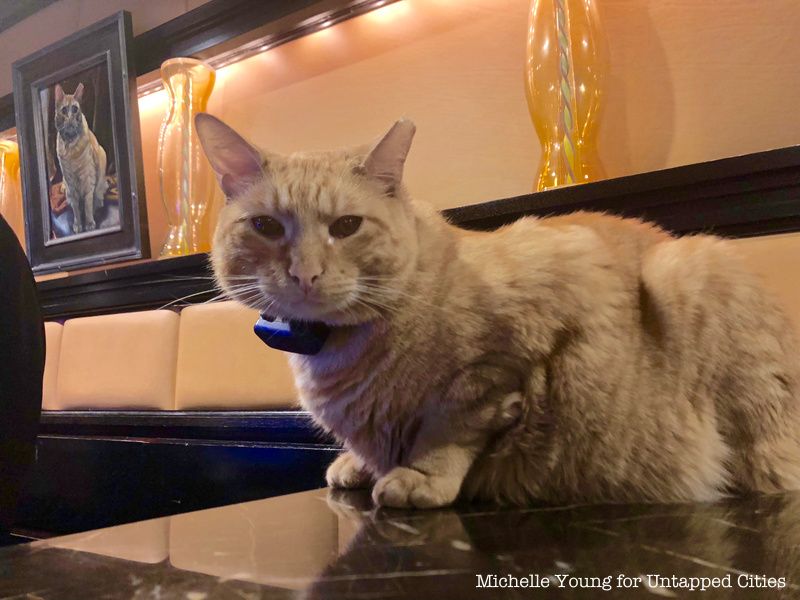
No list of famous NYC animals would be complete without the cats of the Algonquin Hotel. The hotel is now on its twelfth resident cat. There have been eight Hamlets and three Matildas, along with a Billy (the first cat) and a Rusty (who was renamed Hamlet by Algonquin resident John Barrymore). Matilda III was the first social media star of the group. The beloved, long-haired cat who Untapped New York got to “interview” in 2013 had dedicated social media accounts, screentime on international television, and she received emails from human fans (which she would answer). Fans would even stop by to visit her in person and bring gifts. Sadly, Matilda passed away on October 21, 2017, after seven years at the Algonquin.
Today, Matilda’s post is occupied by Hamlet VIII, an orange tabby. Untapped New York “interviewed” Hamlet in 2018 and got to see his two tree houses. Hamlet, a stray found on Long Island, can usually be found lounging around the check-in counter.
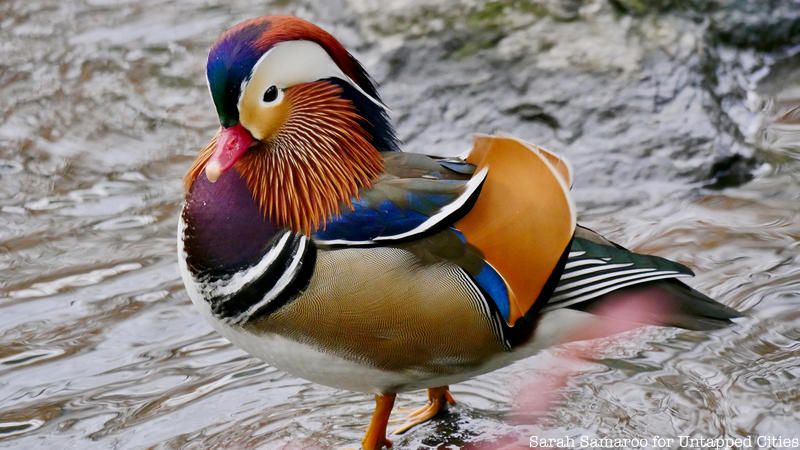
In 2018, birdwatchers, everyday New Yorkers, and tourists alike were transfixed by the appearance of a vibrantly colored bird who descended on Central Park. The mystery of the Mandarin duck’s appearance, and its elusive nature as it flew from various Central Park locations, fueled the frenzy to spot it. New York City was overtaken by duck fever. Dogs were dressed up as the duck, t-shirts were made, The Cut branded the bird “Hot Duck,” and the bird even made it to the pages of the gossip website TMZ!
Mandarin ducks are usually found in East Asia and no New York City zoo claimed the duck as an escapee. It was mostly spotted near the Hallett Sanctuary where people lined up to take photographs. The duck made trips to New Jersey and Brooklyn while he was in New York, and was last spotted in March 2019, right before the spring mating season, disappearing as mysteriously as it appeared.
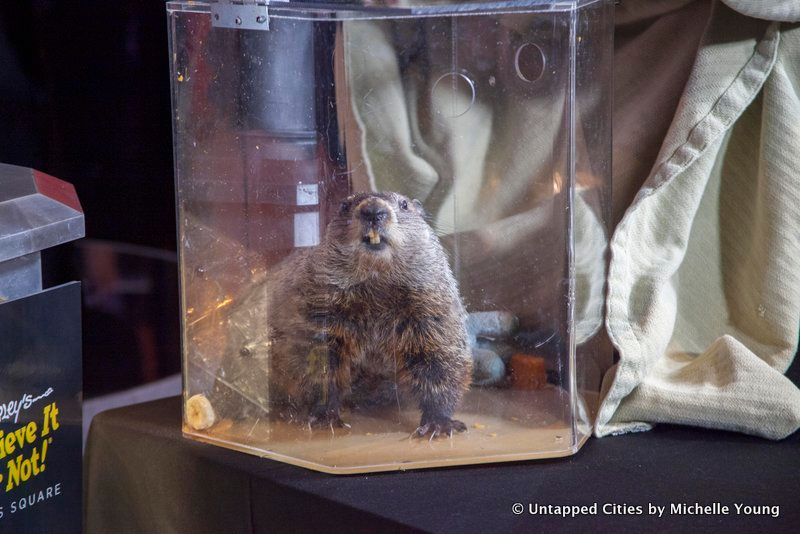
Every February, New Yorkers can count on Staten Island Chuck (also known as Charles G. Hogg) to give a weather prognosis on Groundhog Day. Residing in the Staten Island Zoo, he’s regarded as the official groundhog meteorologist of New York City and has a prediction success rate of 82% as of 2013 (26 out of 32 years).
Besides his official role, Staten Island Chuck gained notoriety when he bit Mayor Bloomberg in 2009. Due to the incident, he was replaced by his daughter, Charlotte, who served as the female “Staten Island Chuck” until Mayor Bill de Blasio accidentally dropped her during the 2014 ceremony, which many believe led to her death the following week. No mayor has been allowed to handle the groundhog since.
Remember, the determined rat who tried to drag a slice of pizza down a flight of subway stairs? He makes it almost all the way, then seems to get a case of the jitters, and dashes from the prize. Comedian Matt Little, who shot the video above, writes in the YouTube description “A rat tries to bring a slice of pizza down subway station stairs OR Master Splinter bringing food home to feed the Teenage Mutant Ninja Turtles?” To which Second Avenue Sagas responded on Twitter: “But did the rat eventually get its pizza or not? The ending is a Sopranos-level cliffhanger.”
Following the incident, the video expectedly became an Internet sensation. Hilarious comments flooded in about the pizza rat not being a true New Yorker in his attempt:
Rookie rat – real New Yorkers fold their pizza in half.
— Neil Wehrle (@neilw) September 21, 2015
The other thing is what amateur New Yorker can’t walk & carry a slice of pizza? That’s an NYC rite of passage.
— Second Ave. Sagas (@2AvSagas) September 21, 2015
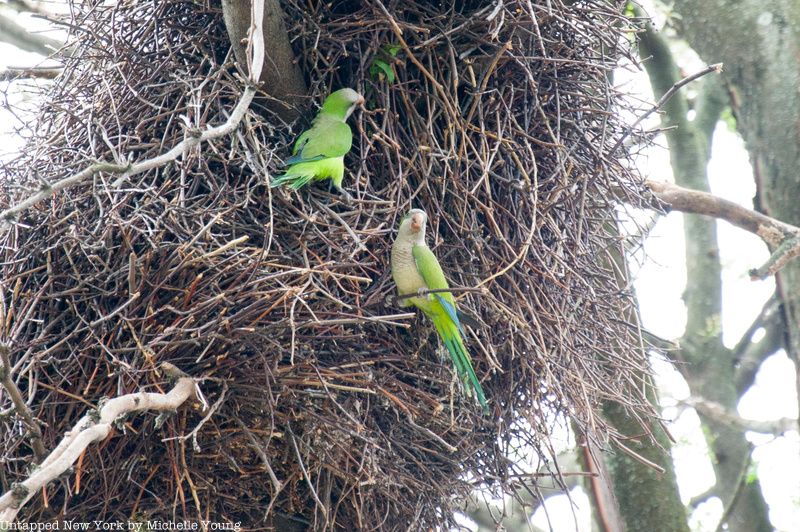
As you walk under the gothic arches at the entrance to Brooklyn’s Green-Wood Cemetery, you may hear the trills and whistles of parrots. A group of monk parrots lives in giant nests made of twigs and branches atop the entrance’s spires. Named for the grey hood on their heads that make them look like monks, this species is native to Bolivia, Brazil, Paraguay, and Uruguay.
The bright green monk parrots of Green-Wood are perhaps the most well-known, but they’ve also been spotted at Brooklyn College, in neighborhoods like Red Hook, Bay Ridge, Manhattan Beach, and Canarsie, and in some parts of Queens and the Bronx. According to Stephen Baldwin, an enthusiast who runs the site BrooklynParrots.com, tens of thousands of Monk Parrots were sent to the United States from Argentina in the 1960s, but it’s unclear exactly how they ended up in the wild.
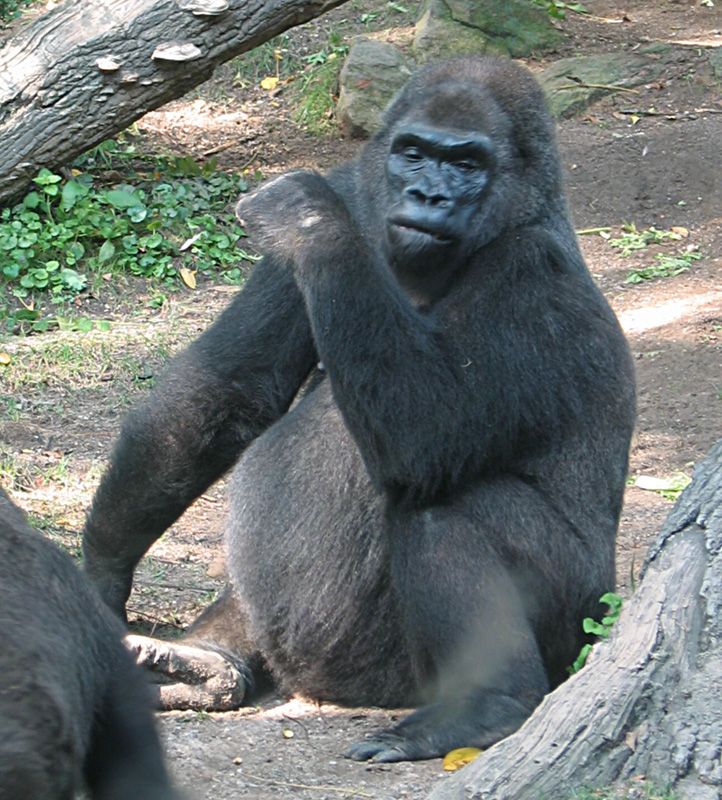
“New York City’s most famous gorilla,” Pattycake, was born in the Central Park Zoo, home to many of NYC’s famous animals, in September 1972. As the first gorilla born in New York, Pattycake’s anticipated birth brought thousands of visitors to the zoo, where she spent the first decade of her life. She was regarded as a “child star” during the early 1970s, serving as one of the city’s most popular attractions. Her level of fame was even compared to that of Shirley Temple.
In 1992, following an incident in which her mother accidentally broke her arm, Pattycake was permanently moved to the Bronx Zoo. Unfortunately, she suffered from chronic heart disease and arthritis and eventually passed away in 2013, at the age of 40. Her legacy is forever memorialized in two books: Gorilla Baby: The Story of Pattycake and Gentle Gorilla: The Story of Pattycake.
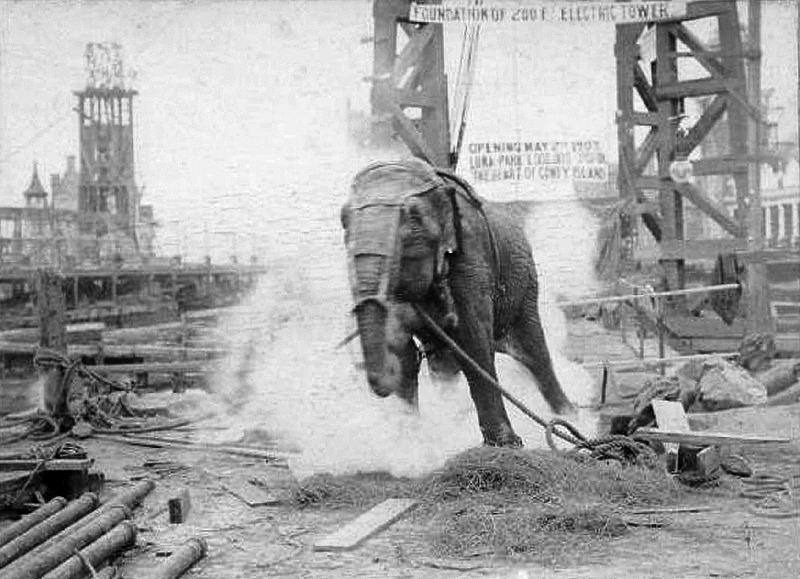
The tragic story of Topsy has gone down in history, thus making this elephant one of New York City’s most (posthumously) famous animals. Topsy was born in Southeast Asia around 1875 and eventually brought to the United States, where she was part of the Forepaugh Circus. In 1902, however, she was sold to Coney Island’s Sea Lion Park (redeveloped later into Luna Park).
There, she was involved in several, well-publicized incidents, which prompted her handlers to plan a public hanging and charge admission for spectators. The Society for the Prevention of Cruelty to Animals strongly objected to this plan, stating that it was unnecessarily cruel. With the organization’s approval, park officials opted instead for death by poisoning, strangulation, and electrocution. On January 4, 1903, the electrocution that ultimately killed Topsy was filmed and later released for kinetoscopes. That film still exists today.
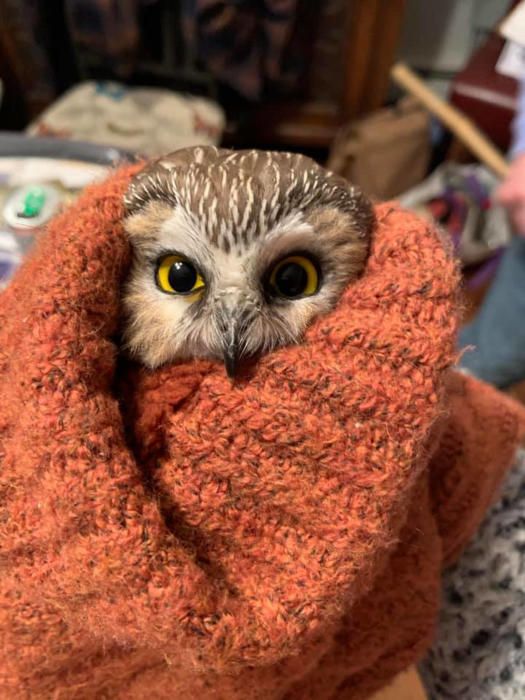
When the Rockefeller Center Christmas Tree arrived in New York City in 2020, there was a little extra surprise stowed away. Little Rockefeller, the big-eyed owl stole the hearts of New York City and brought some Christmas cheer when she hitched a ride from Oneonta to Rockefeller Center. After she was discovered by a crew member on the transport team, Little Rockefeller, as she was dubbed, was sent to the Ravensbeard Wildlife Center in Saugerties to recover from her journey.
Though it looks like a baby, Rocky, as the owl was affectionately called, was a full-grown Saw-Whet Owl, the smallest type of owl in the northeast. At Ravensbeard Wildlife Center, Rocky was given fluids and fed “all the mice she would eat.” After receiving a clean bill of health from the vet, the owl was released back into the wild at dusk.
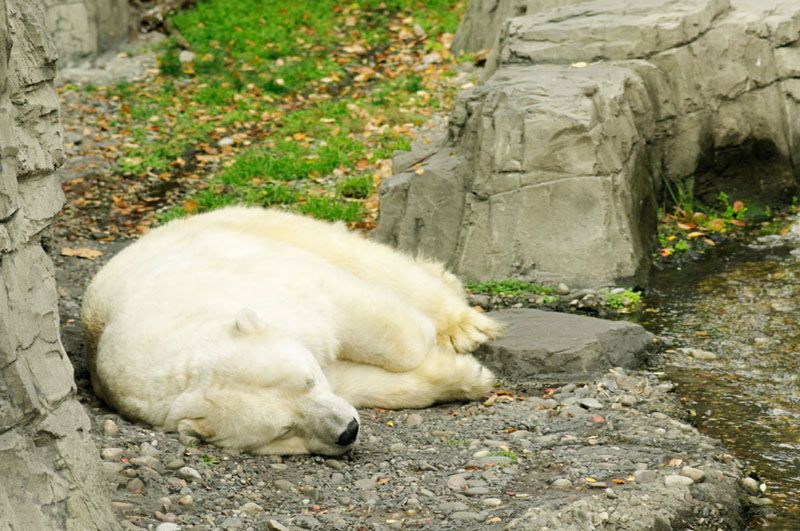
In 2013, he had a poor appetite and experienced difficulty swallowing food. In an attempt to determine the source of the problem, he was placed under anesthesia and veterinarians eventually uncovered a large, inoperable tumor near his thyroid. He was consequently euthanized at the age of 27.
Gus the polar bear was another icon of the Central Park Zoo who was visited by over 20 million people during his lifetime. Throughout the 1990s, he was the face of the zoo and was prominently featured in advertisements and promotional posters. However, in 1994, visitors noticed that Gus had developed obsessive behavior, swimming laps in figure-eight patterns for up to 12 hours a day. Patrons gave him nicknames like the “bipolar bear,” calling him neurotic and flaky. As part of his treatment, he was given Prozac, making him the first animal in history to be treated with the medication. Zoo officials attributed his abnormal behavior to depression, which was thought to have developed following the death of his partner, Ida.
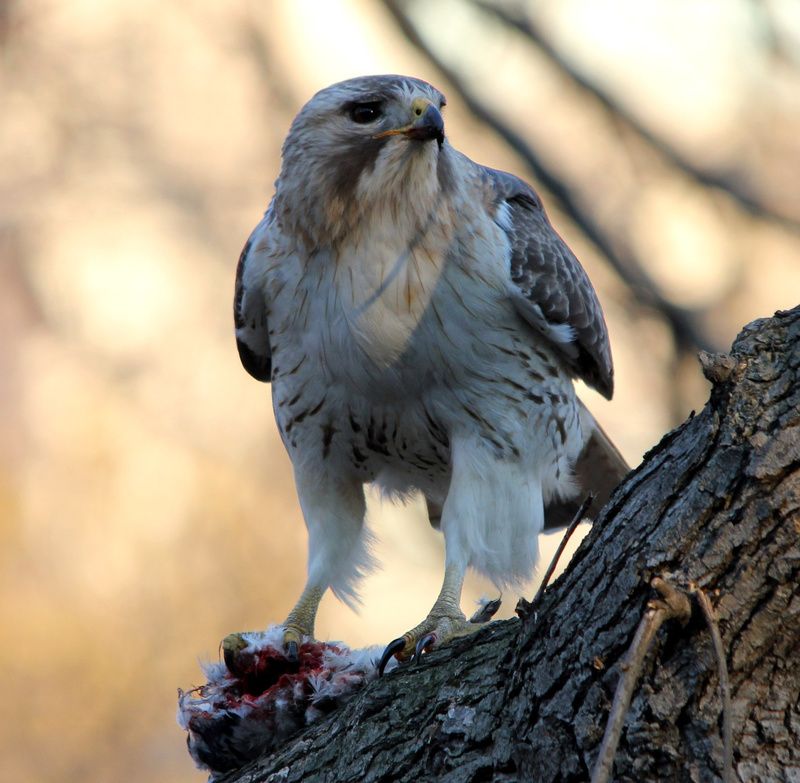
Pale Male needs no introduction: the “world’s most famous red-tailed hawk” has plenty of fans and his own Wikipedia page. Born in 1990, he became one of the first “urban-dwelling” red-tailed hawks known to reside on a building rather than nestling in a tree or on a cliff. Due to his perch on top of a 5th Avenue balcony near Central Park, some of his neighbors over the years have included the likes of Woody Allen and Paula Zahn.
One of his zealous supporters was actress Mary Tyler Moore. Moore advocated for his rights when the co-op board that controlled Pale Male’s building removed his nest due to complaints about droppings and eaten animal carcasses. With help from other animal rights activists, Moore took a fierce stand, which prompted the board to come to an agreement with the local Audubon Society. Pale Male’s nest was eventually replaced, and over the years, birdwatchers and websites like Palemale.com have continued to monitor him. Despite the bird’s worldwide fame, there has been debate in recent years over whether he is actually still alive. While some Pale Male watchers cite photographic evidence that he is still alive, others doubt that he’d be able to dodge all of the perils that come with city living for this long and that images of what is assumed to be Pale Male may be another bird.
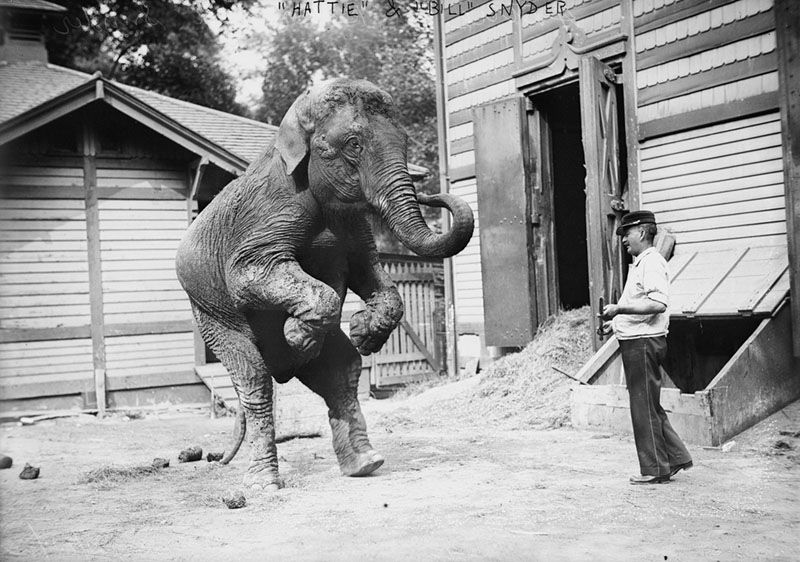
The biggest attraction of the Central Park Zoo was once Hattie the elephant, who was described as “nearly human.” In an article published in 1904, The New York Times referred to her as the most intelligent elephant, even reporting that she understood English. Hattie was brought over from Sri Lanka by German animal dealer Carl Hagenback, who sold her to the zoo for $5,000. With training from Bill Snyder — the man who trained elephants for Ringling Bros. and Barnum & Bailey Circus — she learned to play the harmonica and perform tricks. She was very loved but sadly passed away in November 1922 after battling a week-long illness.
In addition to Pattycake, Hattie, and Gus, the Central Park Zoo was also famously home to a “tiglon” named Charles who was donated to the city in 1938. Charles was the offspring of a female African lion and a male Siberian tiger, a rarer combination than the majestic “liger” (offspring of a female tiger and male lion).
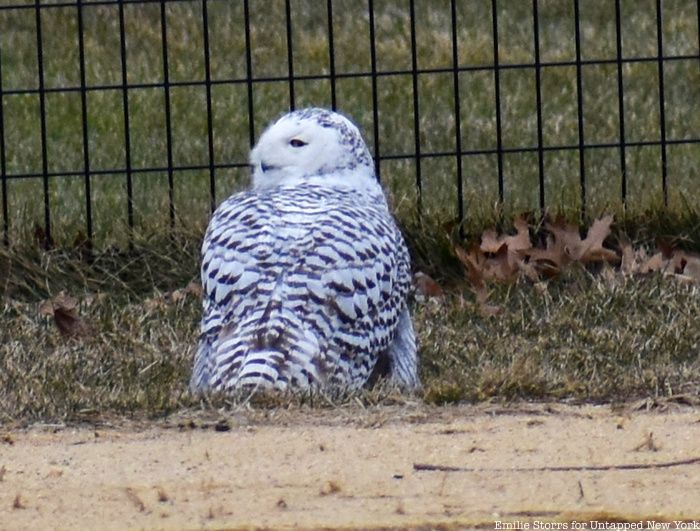
An owl craze swept New York City in the winter of 2021 when for the first time in 130 years, a Snowy Owl appeared in an appropriately snowy Central Park. Before its 2021 debut, the last recorded sighting of the species in Central Park was in 1890. While the city was largely still in lockdown with few entertain options available, the Snowy Owl became a star attraction.
The majestic-looking white bird drew crowds – and the odd celebrity – out into the park in freezing cold temperatures just to catch a glimpse. People lined up around the Central Park Reservoir North Pumphouse where the owl liked to perch.
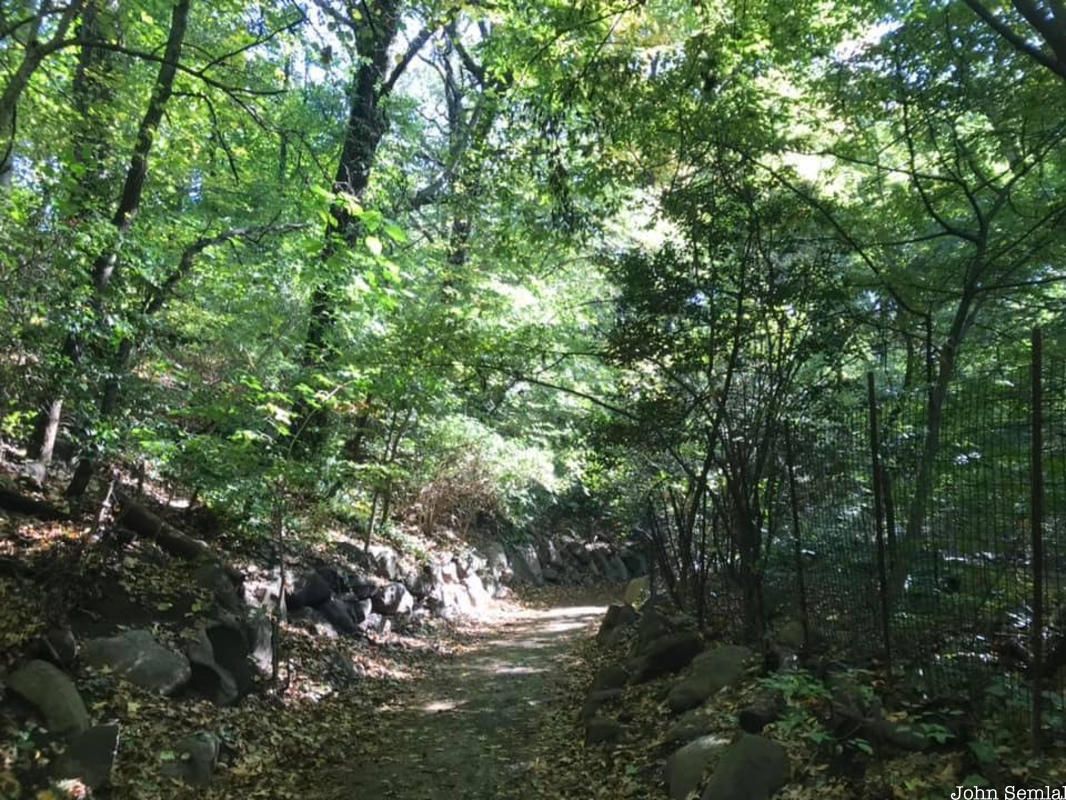
For years, visitors to Prospect Park noticed a feral dog roaming around the grounds of “Brooklyn’s backyard.” Despite multiple reports, however, authorities couldn’t track down the elusive canine, described as a black and brown Cane Corso.
Soon enough, he gained a fan base, and visitors called him “Brooklyn,” “Prospero” — and most notably, the “Ghost Dog of Prospect Park.” NYPost even reported that regulars to the park would sabotage volunteers attempting to track him down. In May 2011, however, Prospero – who turned out to be a real dog and not a ghost – was finally caught after four years. It was discovered that he tested positive for Lyme disease and had bone fragments in his knee. Following a recuperative stay at the Sean Casey Animal Rescue shelter, he was eventually put up for adoption via a Facebook that called for a new guardian and experienced dog owner who would be “physically capable of handling him as well as emotionally capable of training him.”
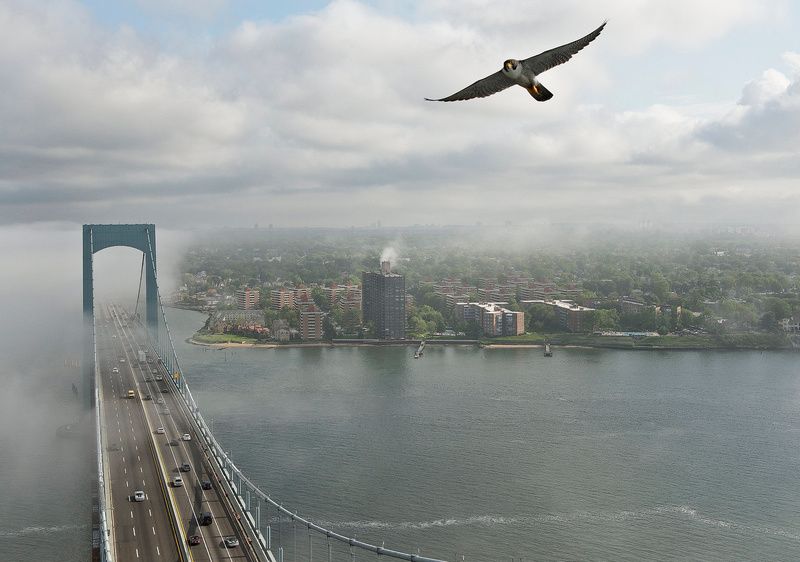
Did you know that many of New York City’s bridges are home to peregrine falcons? These bridge falcons have made nests atop the Brooklyn Bridge, Verrazano Bridge, Throgs Neck Bridge, and George Washington Bridge as well as buildings like the Metropolitan Life Building, Bank of New York, St. Regis Hotel, and Riverside Church. The high vantage points of these locations give the falcons a great view for hunting and a perfect starting point for dramatic dive-bombs toward their prey, which can be as fast as 200 miles per hour!
These birds are native to the East Coast and New York City has the highest concentration of Peregrine Falcons that can be found anywhere, according to Chris Nadareski of NYC’s Department of Environmental Protection. Many of these falcons also have names. Falcons found atop the Throgs Neck Bridge have been named Locust, Edgewater, and Bayside. They are almost all named after the area in which they reside.
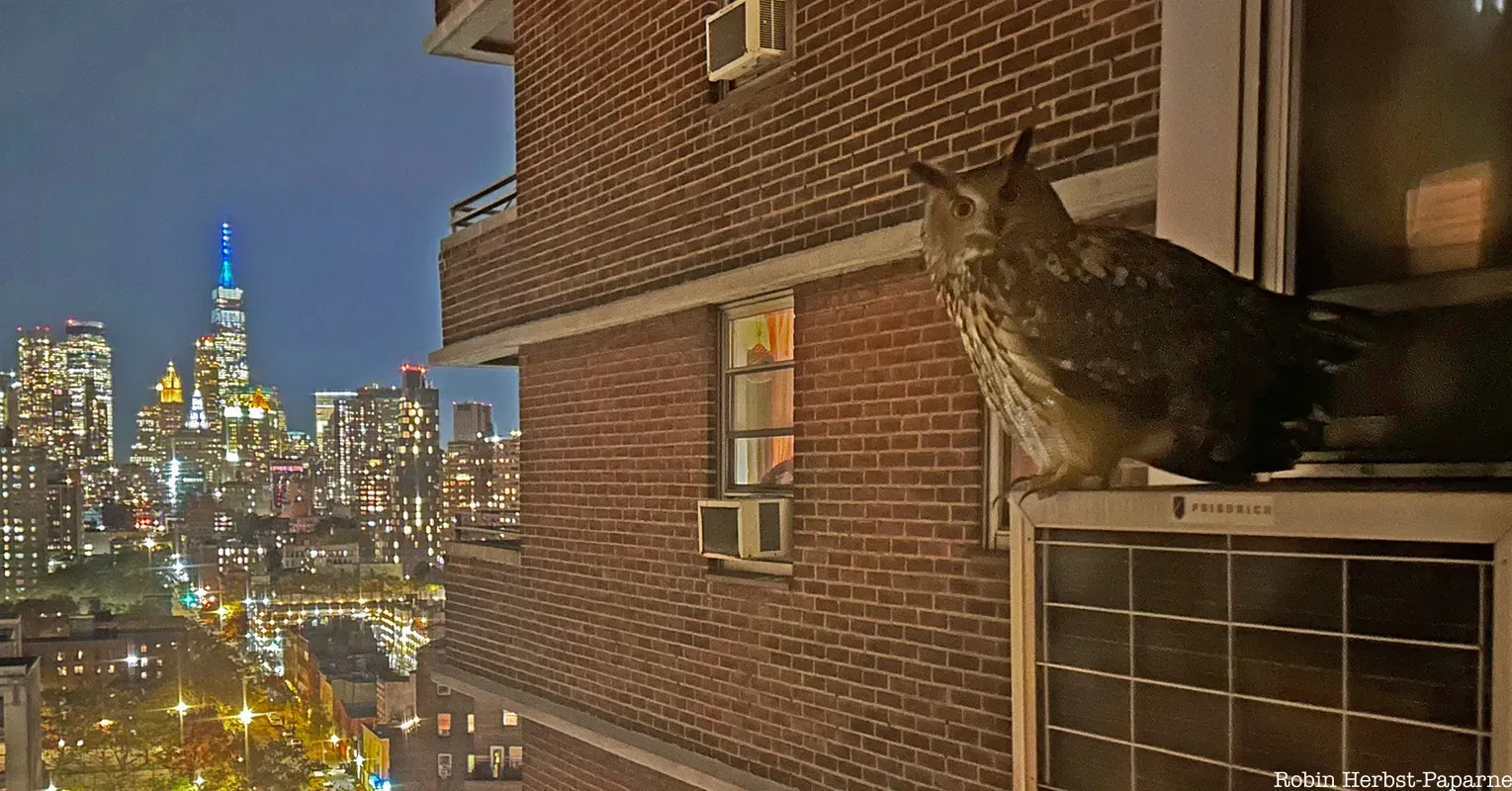
Flaco, an Eurasian eagle owl, gained fame in February 2023 after he was released from his enclosure at the Central Park Zoo by an act of vandalism. During his time as an escapee, New York bird watchers devotedly tracked his movements and reported sightings of the bird from the Lower East Side of Manhattan to the Upper West Side. Flaco's time of freedom tragically came to an end in February 2024 when the 14-year-old owl collided with glass on a building on West 89th Street.
Subscribe to our newsletter